News
This is to announce the death of the telegram. Stop
After 155 years the good old telegram service in the country is to bid goodbye on October 31, giving way to new technology.
Recently both Telecommunication and Information Technology Minister Ranjith Siyambalapitiya and Posts Minister Jeewan Kumaratunge announced that the telegram service would be discontinued.
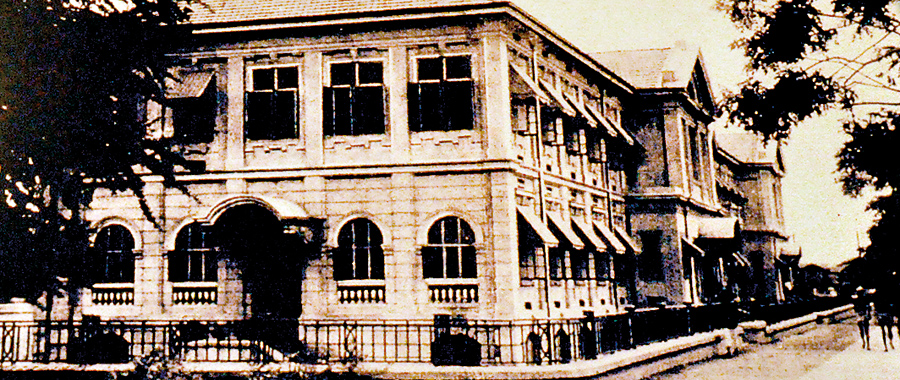
Central Telegraph office in 1912
After the first telegraph message was sent from Colombo to Galle in 1858, it turned out to be the most popular and essential mode of communication for many decades. But today one would be handed over a yellowing set of forms for foreign and local telegrams from a dusty pile idling on a shelf in any post office.
Telegraph messages were exchanged between India and Sri Lanka (then Ceylon) mainly for business purposes.
In 1865, Ceylon received its first telegram from Europe followed by a telegram from the United States in 1866. In 1895, the ‘Morse’ Telegraph Circuit was introduced to the country. The establishment of the Central Telegraph Office in Fort in 1911 popularised the telegraph services islandwide.
J.P.de Alwis, a former Chief Telegraph Master attached to the Central Telegraph Office said in the 1950’s telegrams were considered the most credible and fastest mode of communication.
“Many people will recall a khaki clad telegram delivery man on a bicycle, with messages of births or deaths, job interviews, job postings, weather update and urgent news. Unlike later years, at the beginning it was the fastest method to get a message to Matara and Anuradhapura from Colombo. The message would be delivered in an hour,” he said.
After the Post and Telegraph Office, separated as the Postal Department and the Telecom Department during 1980s the telex system was introduced with words transmitted to the main post offices directly.
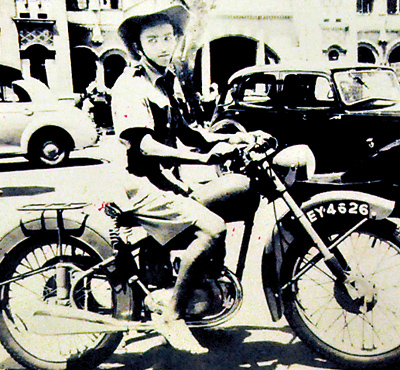
A telegraph messenger of the 1950s
“During the funeral of late Prime Minister S.W.R.D. Bandaranaike, a separate telegraph station was put up at his residence to receive condolences and messages about funeral arrangements. Similary, a temporary telegraph unit was set up at the B.M.I.C.H. premises during the Non-Aligned Conference in 1976,” Mr.de Alwis said.
The Central Telegraph Office that once received about 12,000 telegrams a day now gets only about 50. Ministry of Postal Services secretary Hemasiri Fernando said the telegram began to lose its important place in the area of communication with land phones and later mobile phones becoming popular.
In 1994, there were only 108,000 fixed land lines. By August this year it had increased to 2.7 million by August this year. According to the Telecommunication Regulatory Commission (TRC) mobile subscriber number is recorded at 19 million by August this year.
“A sender of a telegram is charged three rupees where as the cost borne is Rs.250. This has to be shared by both the Postal Department and Sri Lanka Telecom. The already loss-making Postal Department could not handle this additional cost,” he added.
“At present the main users of this service are Members of Parliament and other local government politicians. We have had discussions with the Minister of Public Administration. We will have to promote the telemail service, a mail service communicated via telephone, that costs Rs. 30,” he elaborated.
He said more than 1200 telegram messengers will be absorbed to the mail delivery section. Rohana Jayalath Dissanayke, a former employee at the Central Telegraph Office in Fort said telegraphs saw the best years in the 1960s. “With time the quality decreased and urgent messages were delivered over the phone. Later it became popular mainly among ministers and politicians, to express condolences and to call for meetings,”he added.
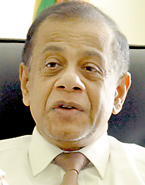
Hemasiri Fernando. Pix by Susantha Liyanawatte
He said in later years there were errors in decoding English to Sinhalese. “The word lawyer ‘neethigna’ is sent as (GNQNQ), but when one lawyer, Mr. Liyanasekare received his telegram he was shocked to see him being referred to as ‘neethi nowana’ (not legal) Liyanasekare. The CTO had to apologise for the error,” he said adding that many other people were at the receiving end of decoding blunders.
India, discontinued its 160-year-old telegram service in July this year and Sri Lanka too will say ‘stop’ to its most loved telegram service next month.
Come Monday morning, I had a desk full of telegrams– Bradman
“Selected for Ceylon Civil Service.Second on Order of Merit.”– was the first official telegram that Bradman Weerakoon, senior bureaucrat and one of the oldest living civil servants in the country received.
Since then he had received a number of telegrams such as, “Assume Duties.Vavuniya.Letter Follows”, “Assume Duty” or “Earlier Transfer Cancelled” etc. During his tenure, 83-year-old Mr.Weerakoon has seen hundreds of telegrams from employees requesting for short leave, petitions, transfers, reason for absence and many more.
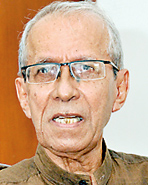
Bradman Weerakoon
“Monday morning my desk was full of telegrams like, ‘Please Grant Leave’, “Father Expired. Grant Leave,” he said. During his time as the Secretary to the Former Prime Minister Dudley Senanayake, he received a telegram just the day before the 1970 elections.
“Courage Sir. Victory Assured.” This was sent by late Mudliyar Bulathsinhala, a then famous astrologer. “Mr.Senenayake lost that election despite the telegram prediction. I had the telegram with me for more than 30 years,” he said.
Mr. Weerakoon said the telegram was the most credible form of communication and it was always seen as gospel truth. The public knew it was no bogus message, because of the official seal. It also reached many distant, rural areas,
“Even if you don’t know the proper address, you could deliver messages like, “Podi Appuhami, Iskole Langa (Podi Appuhami residing near the school). Telegram messengers were much better than the present mail delivery men,” the former Secretary to many later Prime Ministers said.
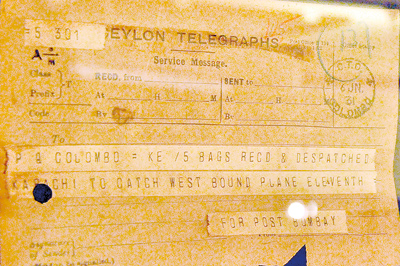
The way it was: An old telegram sent from Colombo to Karachchi

